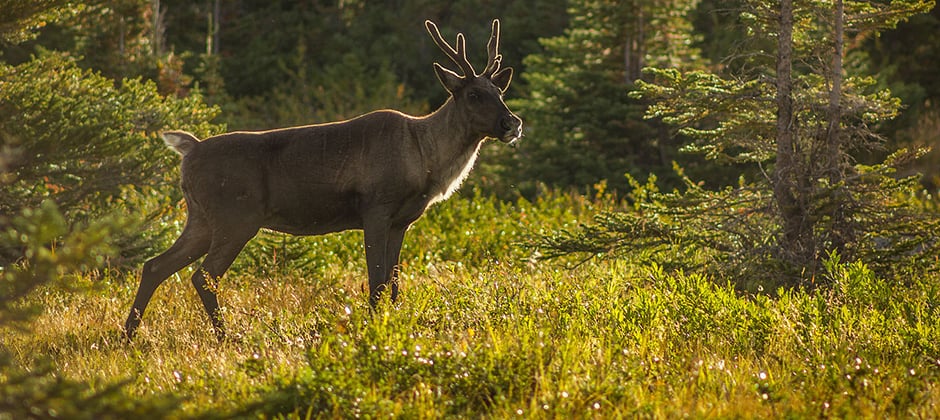Share this article
Southern mountain caribou listed under the ESA
The U.S. Fish and Wildlife Service classified the recently extirpated southern mountain population of woodland caribou (Rangifer tarandus caribou) in parts of Idaho and Washington state as endangered under the Endangered Species Act and confirmed the designation of 30,000 acres as critical habitat.
In 1983, the Service listed the southern Selkirk mountain herd, which roamed through parts of Idaho and Washington, as well as in British Columbia as an endangered distinct population segment under the ESA. This new listing includes that herd as part of a broader distinct population of woodland caribou. The southern mountain population of woodland caribou — as its currently designated — consists of 17 subpopulations — 15 extant and two extirpated.
Those 15 existing herds, numbering approximately 1,200 individuals, roam mostly in British Columbia, where its habitat has declined 60% in recent years. The Selkirk mountain herd ranged between the U.S. and Canada, but earlier this year the last remaining individuals from that herd were removed from the U.S. and relocated to Canada, where biologists think they will have a better chance of survival as part of a potential breeding program. In Canada, woodland caribou are protected under the Species at Risk Act.
The new listing also confirms the designation of critical habitat for the population. In 2012, the Service designated critical habitat for the south Selkirk mountain population, determining that the same 30,000-acre area in Washington and Idaho is appropriate habitat for the south mountain caribou when they roam in the United States. The new rule reaffirms that original designation.
The original critical habitat proposal in 2011 was for an area nearly 10 times as large, but the final designation was pared back after complaints from stakeholders concerned about impacts on other uses of those lands. The Wildlife Society supports the designation of critical habitat and measures to restore, enhance, manage and protect occupied and unoccupied habitats on public lands that are essential to recover endangered and threatened species.
Lastly, The U.S. Fish and Wildlife Service considered altering the classification of this population in 2008, during the required 5-year review for the then-listed southern Selkirk Mountains distinct population segment. It determined that the population was appropriately designated. However, since then the Service has recognized that its analysis did not consider the significance of this population relative to the appropriate taxon.
In 2008, it assessed the significance of the southern Selkirk mountain population relative to the “mountain ecotype” of woodland caribou. However, the “mountain ecotype” is not a species or subspecies, and so they determined the analysis for the southern Selkirk mountains population of woodland caribou should have been conducted relative to the woodland caribou subspecies instead. Performing this analysis led the Service to listing the woodland species itself as an endangered distinct population segment.
Biologists from the U.S. and Canada are working with Native Americans and First Nations to ensure the survival of the woodlands caribou through habitat protections, relocations, and captive breeding. The goal is to reintroduce caribou into the U.S. The Wildlife Society’s position statement recognizes the value of partnerships among state fish and wildlife agencies, Native American tribes, local governments, private landowners, and NGOs in carrying out complementary conservation efforts to recover listed species.
Read TWS’ standing position on Threatened and Endangered Species and Position Statement on the U.S. Endangered Species Act.
Header Image: Woodland caribou are extirpated in the United States, but conservation efforts between the U.S. and Canada aim to bring them back. ©ThartmannWiki








